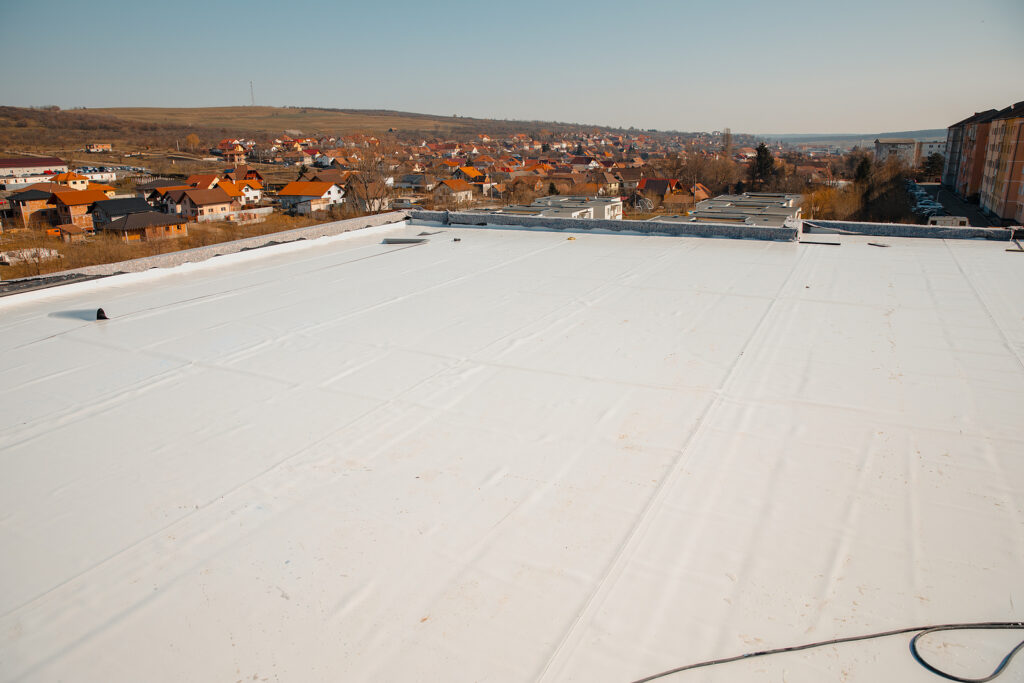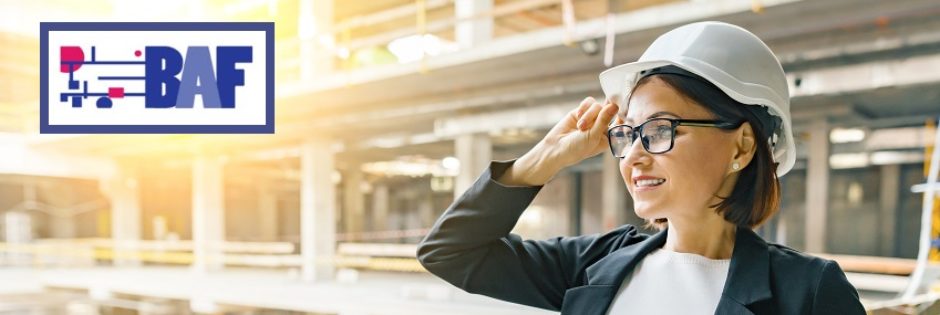Are you a commercial real estate developer working on a new design build project? If so, you’ll soon be considering your options for roofing. Although there are many commercial roofing options available, not all will be the right fit for your build. It is important to choose a roofing system and assembly that is compatible with the design and structure of your commercial building.
Currently, the two leading commercial roofing systems on the market are ballasted roofs and mechanically-fastened roofs. Continue reading to review a brief comparison of both, and better understand which options meet your specific design build objectives.

EPDM Rubber Roofing Basics
Before jumping into a comparison between ballasted and mechanically-fastened roofing systems, it is important to have a basic understanding of commercial rubber roofing. EPDM roof membrane (ethylene propylene diene terpolymer) is the most common thermoset roof membrane in the industry. EPDM roofing mainly contains two compounds, ethylene and propylene, which are derived from oil and natural gas. In terms of installation, they are either fully-adhered, mechanically attached using batten bars, or ballasted. In this blog, we will be discussing the difference between mechanically-fashioned EPDM roofing and ballasted EPDM roofing.
Ballasted Roof Systems
Ballasted roofing installation involves laying loose layers of insulation sheets atop the roof decking, followed by sheets of EPDM roof membrane. Sheets that adjoin are overlapped and fastened using seam tape. Next, all accessible points and the perimeter of the roof are sealed or flashed in accordance with technical specifications. Lastly, river-washed ballast is applied to weigh the entire roofing system down for ultimate security.
Mechanically-Fastened Roofs
Although quite similar in design and performance, mechanically-fastened roofing is installed using a different process and different materials. Starting off with layers of insulation on top of the decking, these roofs are then secured mechanically using insulation plates and fastening hardware. Next comes the layers of EPDM roof membrane sheets over the insulation sheets and plates. Like ballasted roofs, all adjoining sheets are overlapped and secure with seam tape. But rather than being flashed and sealed, they are secured in place using seam plates and fasteners.
Quick Comparisons:
Mechanically-fastened roofing is generally more expensive than ballasted roofing.
Ballasted roofs are most compatible with buildings that have large, open roofs and few roof penetrations. Mechanically-fastened roofs are better suited for buildings with roof penetrations or higher uplifts.
Mechanically-fastened roofs are lighter in weight.
Ballasted roofs usually have a shorter installation timeline.
Roof leaks can be easier detected on mechanically-fastened roofs.
Ballasted roofing is heavier and larger in size compared to mechanically-fasted roofs, and therefore, must be upsized to accommodate the weight of the ballast.
Are you ready to move forward with your commercial real estate design-build project in Indiana? Contact BAF Corporation at 317-253-0531 to speak with an expert Indianapolis commercial general contractor about your commercial construction needs and options, today. We serve clients in all industries and throughout all of Central Indiana.
Related Posts:
Common Roofing Systems for Commercial and Industrial Buildings
4 Types of Renewable Energy Applications for Commercial Buildings
The 6 Phases of a Design Build Construction Project
